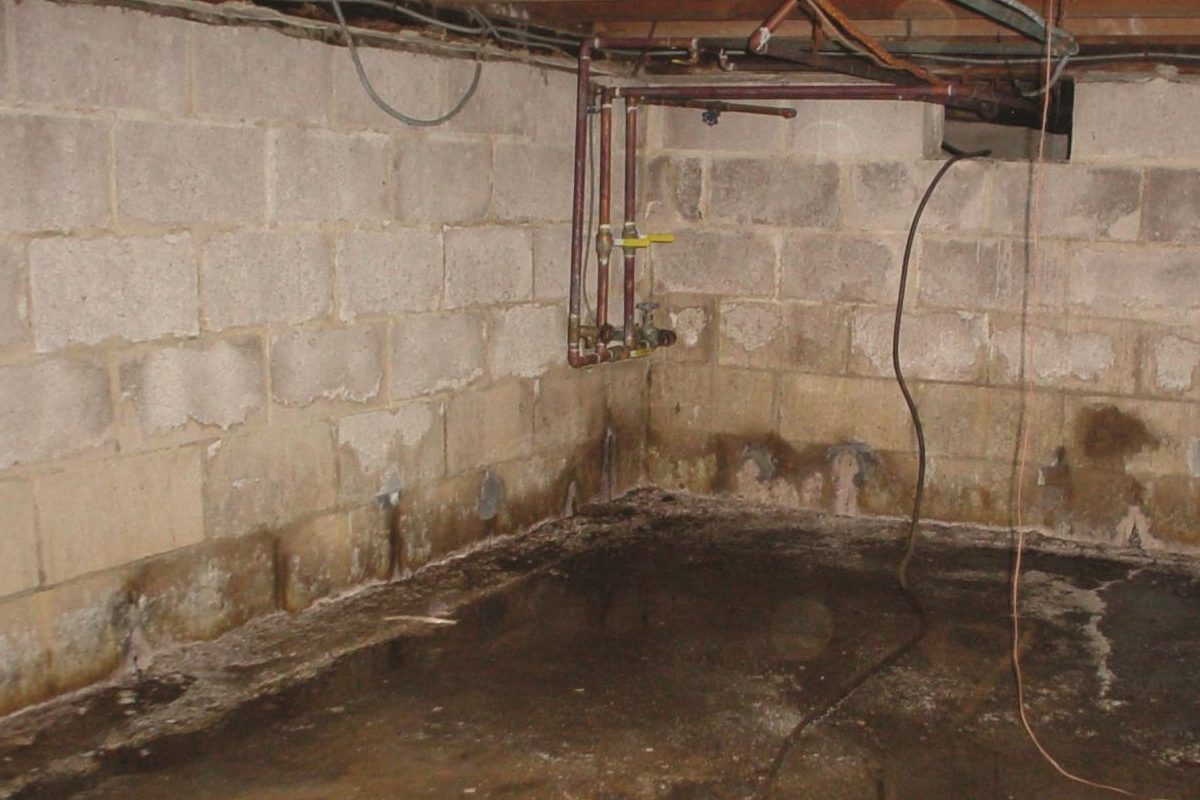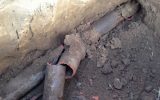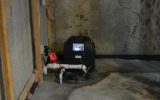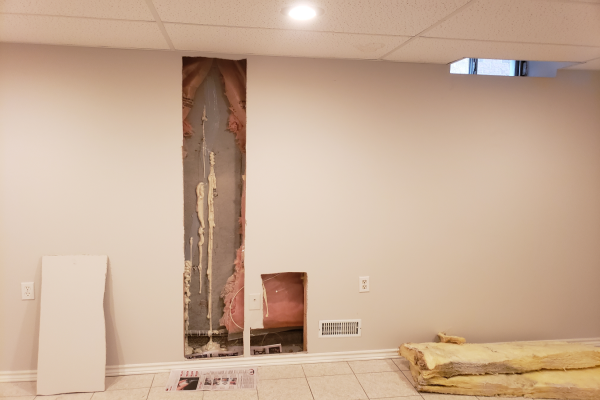The destructive nature and high cost of excavating foundations for waterproofing repairs are the main reasons why many homeowners consider basement waterproofing from inside the home to be an attractive option.
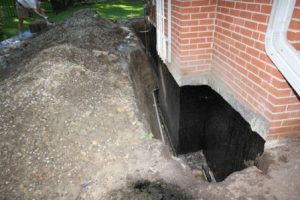
In this blog we cover the following topics:
How the type of foundation you have dictates your waterproofing repair options
How concrete block / cinder block basements are waterproofed from inside
How poured concrete basement walls are waterproofed on the inside
The type of foundation you have dictates your waterproofing repair options
Waterproofing a basement by excavating the foundation, replacing the weeping tile, and coating the foundation is a process that does not vary with the foundation type that is being waterproofed. Appropriate basement waterproofing repairs carried out from inside, on the other hand, do vary with the type of foundation.
Types of foundations found in the Greater Toronto Area:
- Stone (1905 and earlier);
- Double brick (1900 – 1930);
- Concrete block (1920 – late 1970’s with some exceptions); and
- Poured concrete (1930 to present).
All four foundation types can be found within the GTA; however, the majority of foundations for older homes are built using concrete block / cinderblock while the foundations of newer homes (1980 to present) are almost exclusively poured concrete. The available waterproofing methods take into account the nature of each foundation type.
Concrete block / cinder block foundations
The image below is that of a concrete block (also referred to as cinder block or cinderblock); the most important characteristic of this type of foundation that pertains to waterproofing is the fact that the block wall is essentially hollow. This attribute alone limits the available repair options.
Leaks in poured concrete / solid concrete foundations
The image below is a typical poured concrete foundation used in the construction of virtually every home constructed since the late 1970s. Water does not freely penetrate this type of foundation unless a crack develops or there is a void through which water can leak into the basement.
Waterproofing basement walls
When a basement is waterproofed on the outside, a waterproof coating is applied onto the foundation walls. Applying a coating to the interior side of a basement wall is not a viable alternative to coating the exterior of the foundation because an internally applied coating would trap ground water within the foundation walls; this trapped water dramatically increases the rate of deterioration of the foundation due to water saturation of the concrete.
Basements leak because ground water is able to seep through the foundation, in many instances this is attributable to cracks in the foundation; eliminating the cracks would keep your basement from leaking. Follow this hyperlink for an interesting read on replacing weeping tile.
For homeowners with poured concrete foundations most basement leaks can be waterproofed by filling the voids (cracks and other sources) with injected resins. Unfortunately, this is not the case for homes built with concrete block / cinderblock foundations; this is because the inherent voids of these “hollow” walls cannot be filled in order to prevent seepage from the blocks into your basement.
How concrete block / cinder block basements are waterproofed from inside
There is only one way to waterproof a leaking cinder block foundation from the inside – by installing an interior perimeter drain / weeping tile system inside the basement. This type of waterproofing is effectively water management rather than waterproofing; however, it is very effective at keeping your basement dry and usually costs 1/2 to 1/3 of the cost of excavating and waterproofing your foundation on the outside.
The two images below provide a quick overview of how this kind of basement waterproofing system works. Essentially, water drains down to the bottom of the hollow block walls; therefore, the floor is opened and holes are drilled into the blocks allowing the water to drain out. This water is carried via a drain pipe to a sump pump which mechanically evacuates the water to the outside.
Follow this hyperlink to learn in greater detail how this interior basement waterproofing system is installed.
How poured concrete basement walls are waterproofed on the inside
As mentioned above, waterproofing a poured concrete basement on the inside consists of filling the voids which are allowing ground water to penetrate the foundation walls; the process involved is referred to as injection.
Crack injection, or the injection of any void in a poured concrete foundation, actually eliminates the void and thereby, the source(s) of the basement leak(s). It is important to note that the voids and cracks are filled through the entire thickness of the foundation wall, thereby keeping the ground water on the outside of the foundation where it belongs.
There are two injection methods: epoxy crack injection and polyurethane injection; follow the hyperlinks for detailed information on these basement leak repair techniques.
Another very important factor is the low cost of injection.

